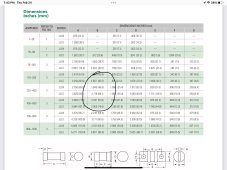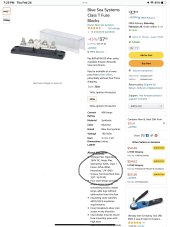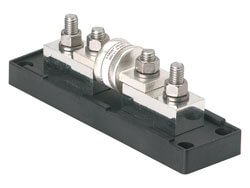Bluedog225
Texas
I’m learning the hard way about class T fuse details.
Am I right in thinking the “B” dimension is exclusively determined by amp rating? I’d like to purchase the correct fuse for my blue sea holders. Buying the wrong stuff is getting expensive (chuckle).
JLLN and JLLS is a mystery to me. And the blue sea fuse holder spec on Amazon (and on the Blue Sea web site) doesn’t seem to specify which one it wants. But they have different B dimensions. I can measure the fuse holder (it’s up at the cabin) but feel like I’m missing something.
Any help appreciated understanding exactly which class T fuse to buy.
Thanks


Am I right in thinking the “B” dimension is exclusively determined by amp rating? I’d like to purchase the correct fuse for my blue sea holders. Buying the wrong stuff is getting expensive (chuckle).
JLLN and JLLS is a mystery to me. And the blue sea fuse holder spec on Amazon (and on the Blue Sea web site) doesn’t seem to specify which one it wants. But they have different B dimensions. I can measure the fuse holder (it’s up at the cabin) but feel like I’m missing something.
Any help appreciated understanding exactly which class T fuse to buy.
Thanks






